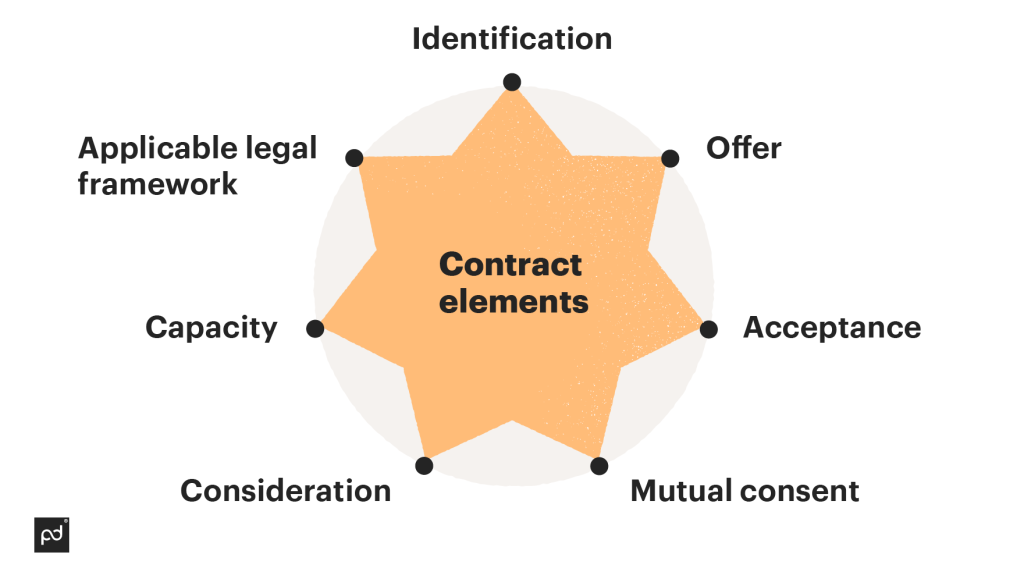
Are you kicking off a real estate business, starting your freelance career, working in sales, or any other field where contracts are key?
In this guide, we’ll break down the different types of contracts you might use and explain the aspects of contract law you need to know.
You’ll also learn how to easily draft your first and all subsequent contracts with the help of customizable business templates.
Let’s master contract creation!
A contract is a legally binding agreement between two or more parties. In it, you have all the details of the agreement clearly defined.
Think of it as a legally enforceable promise, with parties saying to each other, “I will do this, and if I don’t, you can take these legal steps to seek a remedy.”
A contract also explains the responsibilities of each party and the legal consequences that may occur if you or any other party breaks the contract terms.
In order for a contract to be legally binding, it must meet certain requirements.
Specifics may vary by jurisdiction but generally include seven essential elements.

These seven parts of the contract allow you to turn a simple promise into a legally binding contract.
Contracts are everywhere, from our mortgages to our phone plans.
Creating an exhaustive list of types of contracts would take many pages. Instead, here are the most common contract types you’ll see in day-to-day business:
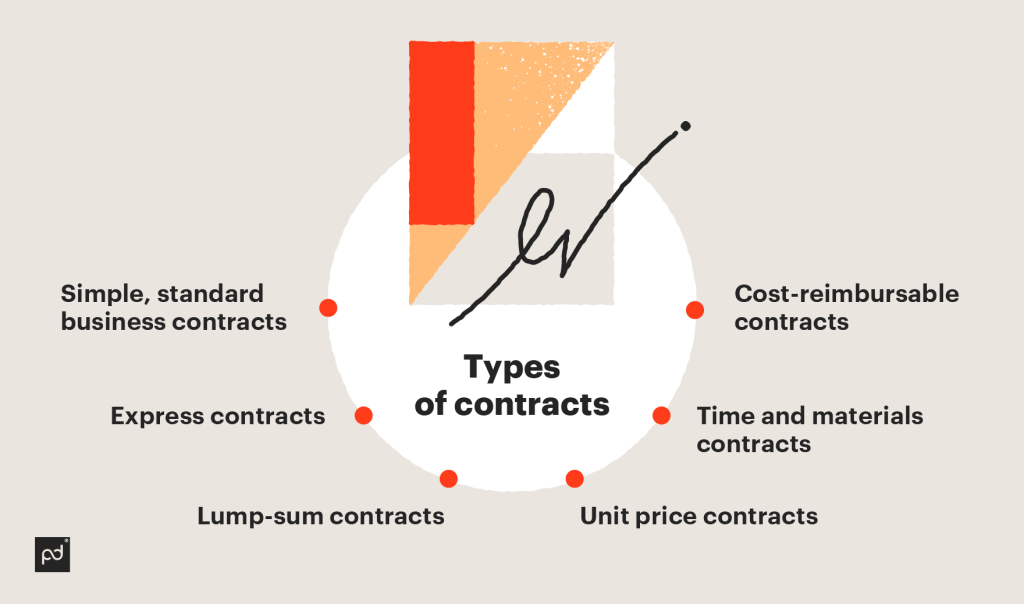
This type of contract is a simple outline of an agreement between two parties.
For example, a non-disclosure agreement (NDA) or an employment contract between an employee and a business owner.
It’s legally binding and enforceable, even though it doesn’t require an official seal.
These kinds of contracts can be verbal agreements, although written contracts are always advised.
An express contract occurs when two or more parties interact and agree on terms.
For example, if you’re at an auction and you bid on an item, you form an express contract to buy that item.
There doesn’t need to be a written agreement for this to happen.
Also known as a fixed-cost contract, parties agree to a lump-sum payment in advance.
For example, an agreement to pay an independent contractor’s estimate.
There’s usually a consideration for unexpected costs built into the payment.
That’s because the payment details stay the same even if costs increase during work.
Cost estimation can be a lengthy process with these contracts. It’s important for estimates to be accurate to avoid one party losing out on the deal.
Learn how to create contracts fast, and negotiate, edit, and approve in real time with PandaDoc.
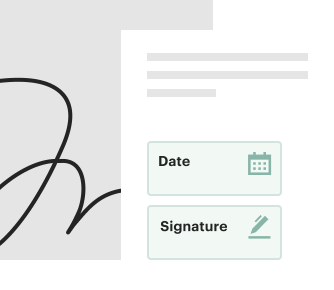
In these legally binding contracts, the price of a “unit” is mutually agreed upon by a buyer and a provider.
A unit can represent time, materials, or labor. For example, one unit might be the cost to complete one square foot of flooring.
Therefore, the total cost of the contract is only determined once the work is completed.
Total costs can be estimated based on the scale of the project.
That means it’s easy for both parties to understand and adjust in case of a change of scope.
This one is quite self-explanatory; payment is based on the time and materials needed to complete a project.
This is a highly flexible form of legal agreement, but it can lead to escalating costs if project parameters change.
A contractor is reimbursed for the costs incurred over the terms of the contract.
This is normally estimated by the contractor before work is completed. Parties can also agree on a cost ceiling to avoid costs going beyond a certain point.
This is quite common for lawyers or legal advice.
These kinds of service contracts allow for ongoing work with a contingency. Parties can meet and discuss the next steps if the cost ceiling is reached.
You can create a contract agreement from scratch or with the help of contract management software and use a document tracking solution to track all the actions that parties involved take.
Either way, follow these simple steps.
They’ll help you determine what type of contract you need and write a basic framework.
Also, when it comes to signing a contract, remember that most of them are signed electronically these days to reduce delays and paper consumption, and the convenience of having them instantly retrievable from secure cloud storage.
Nearly 100,000 client accounts have utilized our platform to electronically sign documents at least once.
Including over 37,000 accounts in January 2024 alone, where e-signature was vastly used for any type of document.
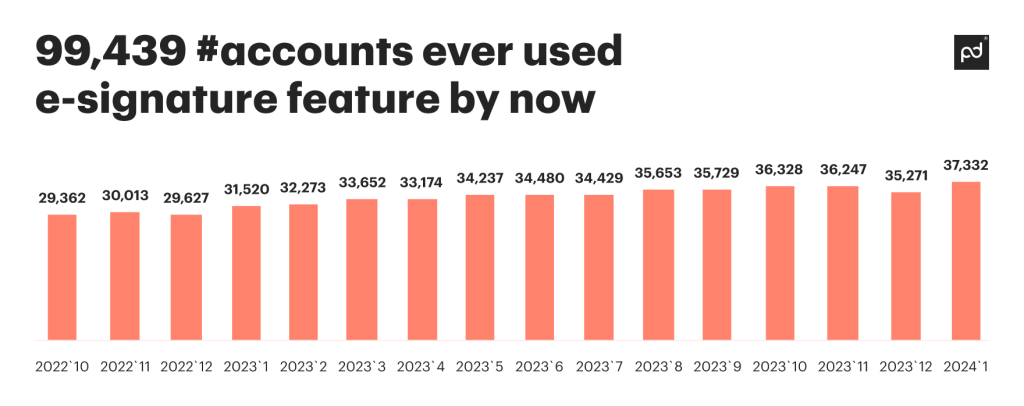
There are a few best practices you can follow that will help you make an effective contract.
It’s important that all parties can understand the terms of the agreement, so avoid unnecessarily complex “legalese.”
Agree on a way to terminate the contract and a way to resolve breach of contract disputes ahead of time.
This can save a lot of time and resources if problems arise later. Agreements to mediate disputes can avoid costly legal action.
An excellent way to ensure this happening is through the use of inline comments.
In just the US alone, 1145 of our clients used this feature during the first two weeks of January 2024 to comment on document sections, tag team members, and manage feedback when constructing and revising their contracts. And this number is continuously growing.
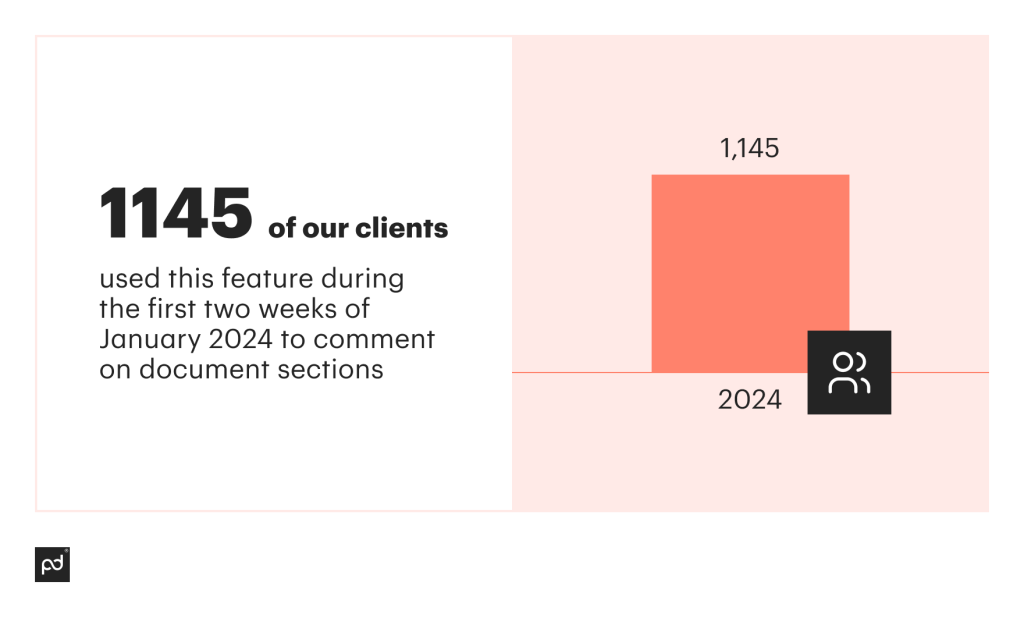
That includes payment schedules and penalty clauses. Keep the terms well-organized and easy to track.
Request a demo and discover how audit trail and signing process can automate your contract workflow.

Whether you’re creating a sales contract or service agreement, you can create one yourself and customize details, such as deliverables, the scope of work, and any warranties.
In fact, over 85,000 of our clients have counted on official contract templates to save time and minimize errors when crafting legal agreements — including 28,000 accounts during the first month of 2024.
As long as an agreement is legally binding, and all parties agree, you have a contract.
As you scale up your business, you might face the need to create hundreds of contracts every month.
Want more efficiency? Integrate tools with the solutions you use daily, such as CRMs, payment systems, or document storage solutions, and easily import data into your contracts.
You can create contracts in minutes with contract management software features.
Next, you can easily share and collaborate on contracts, automatically track renewals, and more. Schedule a 15-minute demo with us today.
PandDoc is not a law firm, or a substitute for an attorney or law firm. This page is not intended to and does not provide legal advice. Should you have legal questions on the validity of e-signatures or digital signatures and the enforceability thereof, please consult with an attorney or law firm. Use of PandaDocs services are governed by our Terms of Use and Privacy Policy.
Originally published December 8, 2022, updated August 12, 2024
Yauhen Zaremba Director of Demand Generation at PandaDoc
Yauhen is the Director of Demand Generation at PandaDoc. He’s been a marketer for 10+ years, and for the last five years, he’s been entirely focused on the electronic signature, proposal, and document management markets. Yauhen has experience speaking at niche conferences where he enjoys sharing his expertise with other curious marketers. And in his spare time, he is an avid fisherman and takes nearly 20 fishing trips every year.
Reviewed byAshley Kemper VP of Revenue Marketing
Ashley Kemper leads the Revenue Marketing team at PandaDoc. She has worked in marketing for more than 12 years, building marketing teams at Asana, and launching new brands at Double and HyperComply. Before venturing into marketing, Ashley worked in content and publishing at National Geographic, Agence France-Presse, and Government Executive magazine.
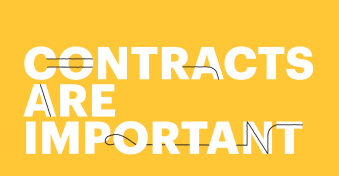


Subscribe to get our most-popular proposal eBook and more top revenue content to help you send docs faster.